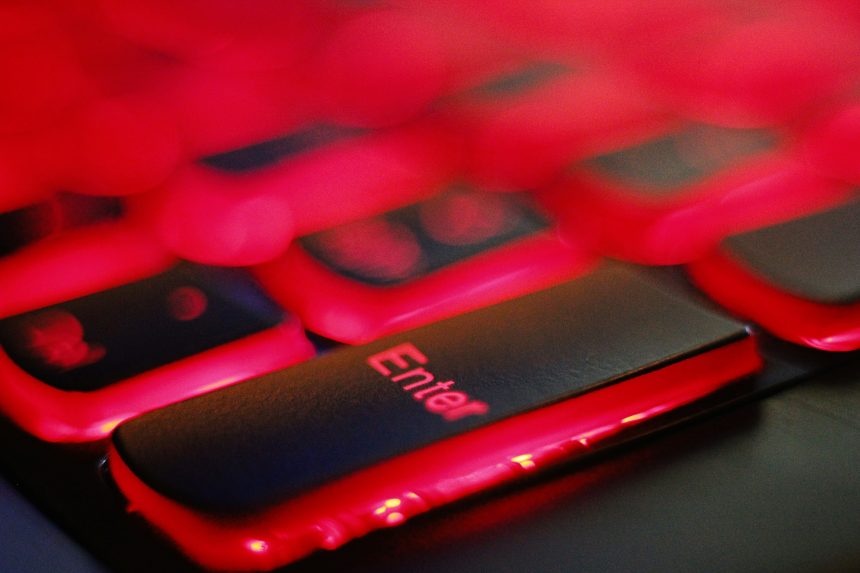Imagine settling in for a productive work session on your Lenovo IdeaPad 320, only to find that the keyboard has decided to take an impromptu vacation. Frustrating, right? The good news is that you’re not alone in this dilemma. Many users have encountered the same issue of their Lenovo IdeaPad 320 keyboard suddenly refusing to cooperate. But fear not, because we’ve got you covered with three ingenious ways to unlock your keyboard and get back to typing up a storm. Whether you’re a seasoned tech whiz or just looking for some quick fixes, these solutions will have you tapping away on your trusty laptop in no time.
Introduction: Lenovo IdeaPad 320 Keyboard Issue
The Lenovo IdeaPad 320 is a reliable laptop known for its performance, but one common issue that users often face is related to the keyboard functionality. Users have reported instances where certain keys stop responding, leading to frustration and hindrance in daily tasks. This keyboard glitch can be particularly troublesome for those who rely heavily on their laptops for work or studies.
The keyboard problem on the Lenovo IdeaPad 320 raises questions about the overall build quality and durability of the device. Is it a hardware issue stemming from poor internal components, or could it be a software glitch that can be easily fixed with updates? Understanding the root cause of this keyboard malfunction is essential in finding effective solutions and preventing similar issues in the future. As users navigate through these troubleshooting processes, they are provided with an opportunity to learn more about their devices’ inner workings and potentially enhance their technological problem-solving skills.

Possible Causes of Keyboard Malfunction
One possible cause of keyboard malfunction in the Lenovo IdeaPad 320 could be physical damage or debris accumulation. Over time, dust, food particles, or other foreign objects can get lodged underneath the keys, disrupting the electrical connections and causing them to malfunction. Regularly cleaning the keyboard and ensuring no obstructions are present can help prevent this issue.
Another potential reason for a malfunctioning keyboard on the IdeaPad 320 may be driver problems. Outdated or corrupted keyboard drivers can lead to erratic behavior or unresponsiveness in typing. Updating the drivers through Device Manager or reinstalling them from Lenovo’s official website can often resolve this issue efficiently.
Finally, software glitches or operating system errors could also be culprits behind a non-working keyboard. Issues like conflicts with third-party software, settings misconfigurations, or system updates gone wrong can all impact the functionality of the keyboard. Troubleshooting by performing system restores, uninstalling recent problematic software installations, or running diagnostic tests might be necessary to pinpoint and fix these underlying software-related problems effectively.
Method 1: Restart Your Laptop
When faced with the frustrating issue of a non-responsive keyboard on your Lenovo IdeaPad 320, one of the simplest yet effective solutions is to restart your laptop. This method may seem too straightforward, but it can often resolve various technical glitches by clearing out temporary issues in the system’s memory. By performing a restart, you give your laptop a chance to reset and recalibrate its components, potentially fixing any underlying software conflicts causing the keyboard malfunction.
Moreover, restarting your laptop is a quick and convenient troubleshooting step that requires minimal technical expertise. If you are dealing with a stuck or unresponsive key situation on your Lenovo IdeaPad 320, opting for this method can be an initial step before delving into more complex solutions. Remember that even minor disturbances in software operations can lead to hardware-related issues like keyboard malfunctions; thus, restarting your laptop could be the key to unlocking seamless functionality once again.

Method 2: Update Device Drivers
Another effective solution to unlock the keyboard on your Lenovo IdeaPad 320 is to update the device drivers. This method is often overlooked but can have a significant impact on resolving keyboard issues. Outdated or missing drivers can cause malfunctioning hardware, including keyboards, so ensuring they are up-to-date is crucial for proper functionality.
To update your device drivers, you can visit Lenovo’s official website and navigate to the support section. Look for the latest driver updates specifically designed for your model of IdeaPad 320. Download and install these updates following the instructions provided by Lenovo. By keeping your device drivers current, you not only fix existing problems with your keyboard but also improve overall system performance and stability. Remember, regular driver updates are a simple yet powerful way to maintain your laptop’s health and functionality.
Method 3: Check for Physical Damage
When troubleshooting your Lenovo IdeaPad 320 keyboard issues, don’t forget to inspect the physical condition of the device. Physical damage can often be the culprit behind a malfunctioning keyboard. Take a close look at the keys, ensuring there are no visible signs of wear and tear such as cracks, dents, or loose keycaps.
Sometimes a simple spill or dust accumulation can cause keys to stick or stop working altogether. In such cases, gently clean the keyboard using compressed air or a soft brush to remove any debris that may be hindering normal functionality. If you spot any physical damage, consider replacing the affected keys or seeking professional help to address more serious issues with your Lenovo IdeaPad 320 keyboard.

Additional Troubleshooting Tips
When faced with a Lenovo IdeaPad 320 keyboard not working issue, sometimes the solution may not be as straightforward as expected. Here are 5 additional troubleshooting tips to help you unlock your keyboard and get back to work efficiently.
Update Keyboard Drivers: Outdated or corrupted keyboard drivers can often result in functionality issues. Head over to Lenovo’s official website, look for the latest keyboard drivers compatible with your IdeaPad model, and download them.
Check for Hardware Issues: Sometimes the problem lies within the hardware itself. Inspect the keyboard for any physical damage or debris that might be causing keys to malfunction. If necessary, consider seeking professional assistance for repairs.
Conclusion: Resolve Lenovo IdeaPad 320 Keyboard Issue
In conclusion, resolving the Lenovo IdeaPad 320 keyboard issue requires a systematic approach to troubleshooting. By exploring various solutions such as updating drivers, checking for physical damage, and performing a reset, users can effectively unlock their keyboard functionality. It is essential to understand that keyboard issues are often fixable through simple methods rather than resorting to expensive repairs or replacements.
By following the steps outlined in this guide, Lenovo IdeaPad 320 users can regain full access to their keyboards without unnecessary hassle. Remember that patience and attention to detail are key when troubleshooting any hardware problem, including keyboard malfunctions. Utilizing these techniques can not only save valuable time and money but also empower users to take control of their devices’ maintenance and upkeep for a smoother computing experience.


